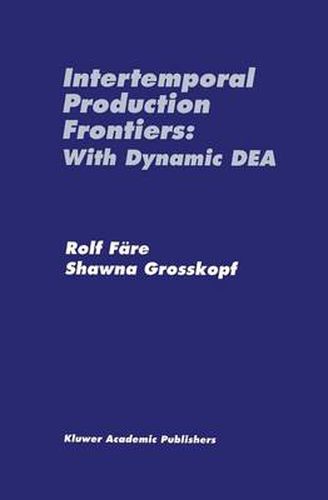Readings Newsletter
Become a Readings Member to make your shopping experience even easier.
Sign in or sign up for free!
You’re not far away from qualifying for FREE standard shipping within Australia
You’ve qualified for FREE standard shipping within Australia
The cart is loading…






This title is printed to order. This book may have been self-published. If so, we cannot guarantee the quality of the content. In the main most books will have gone through the editing process however some may not. We therefore suggest that you be aware of this before ordering this book. If in doubt check either the author or publisher’s details as we are unable to accept any returns unless they are faulty. Please contact us if you have any questions.
Our intention with this book is to extend the efficiency literature to the case of intertemporal models. We do this in steps. First, we introduce static network models which will serve as building blocks for our intertemporal budgeting models and our dynamic models. Next, we devote two chapters to productivity measurements, which we think of as comparative static models. Intertemporal budgeting models and dynamic models are taken up after that. Each chapter, except Chapter One, contains an empirical applica- tion. These applications are coauthored with colleagues and stu- dents; thanks are due to Runar Brannlund, Yijan He, Julius Hor- vath, Pontus Roos, Jerry Whittaker and S. (Lek) Yaisawarng . . We would also like to thank Dale Boisso and Kathy Hayes for gra- ciously sharing their data on Illinois municipalities with us. Two of the applications are already published, namely: Environmental Regulation and Profitability: Applications to Swedish Pulp and Pa- per Mills, Environmental and Resource Economics 6: 23-36, 1995, (Section 2. 5) and Productivity and Quality Changes in Swedish Pharmacies, International Journal of Production Economics 39: 137-144, 1995, (Section 3. 5). We are grateful to Kluwer Academic Publishers and Elsevier Science for kindly allowing us to reproduce these publications here. During the summer 1995 we spent a very enjoyable two months at the Center for Economic Studies (CES) at the University of Munich.
$9.00 standard shipping within Australia
FREE standard shipping within Australia for orders over $100.00
Express & International shipping calculated at checkout
This title is printed to order. This book may have been self-published. If so, we cannot guarantee the quality of the content. In the main most books will have gone through the editing process however some may not. We therefore suggest that you be aware of this before ordering this book. If in doubt check either the author or publisher’s details as we are unable to accept any returns unless they are faulty. Please contact us if you have any questions.
Our intention with this book is to extend the efficiency literature to the case of intertemporal models. We do this in steps. First, we introduce static network models which will serve as building blocks for our intertemporal budgeting models and our dynamic models. Next, we devote two chapters to productivity measurements, which we think of as comparative static models. Intertemporal budgeting models and dynamic models are taken up after that. Each chapter, except Chapter One, contains an empirical applica- tion. These applications are coauthored with colleagues and stu- dents; thanks are due to Runar Brannlund, Yijan He, Julius Hor- vath, Pontus Roos, Jerry Whittaker and S. (Lek) Yaisawarng . . We would also like to thank Dale Boisso and Kathy Hayes for gra- ciously sharing their data on Illinois municipalities with us. Two of the applications are already published, namely: Environmental Regulation and Profitability: Applications to Swedish Pulp and Pa- per Mills, Environmental and Resource Economics 6: 23-36, 1995, (Section 2. 5) and Productivity and Quality Changes in Swedish Pharmacies, International Journal of Production Economics 39: 137-144, 1995, (Section 3. 5). We are grateful to Kluwer Academic Publishers and Elsevier Science for kindly allowing us to reproduce these publications here. During the summer 1995 we spent a very enjoyable two months at the Center for Economic Studies (CES) at the University of Munich.